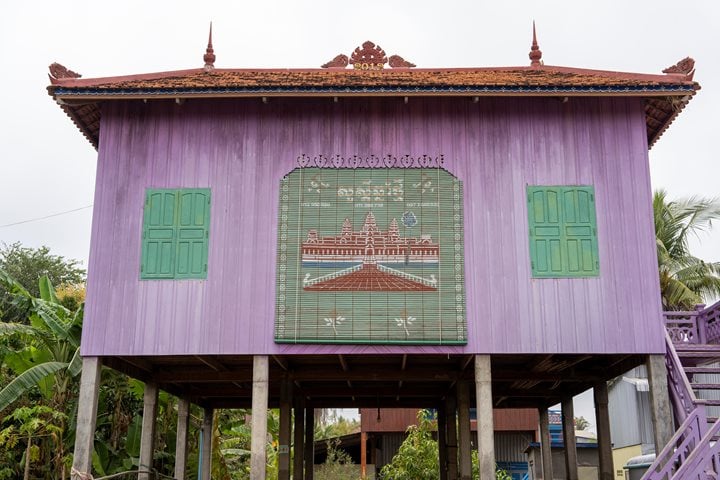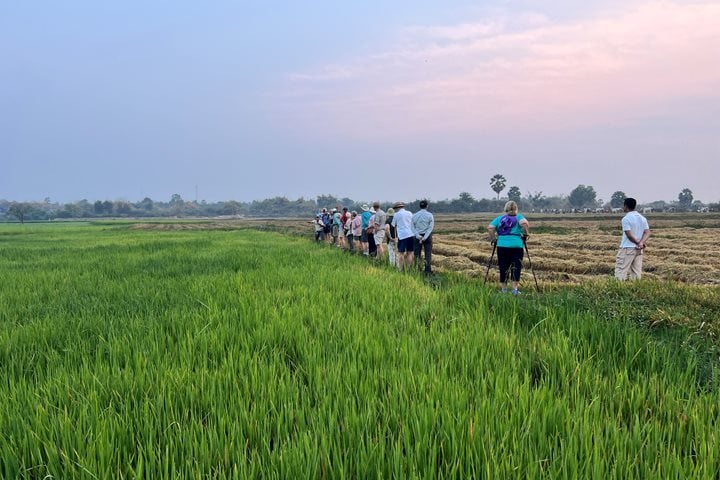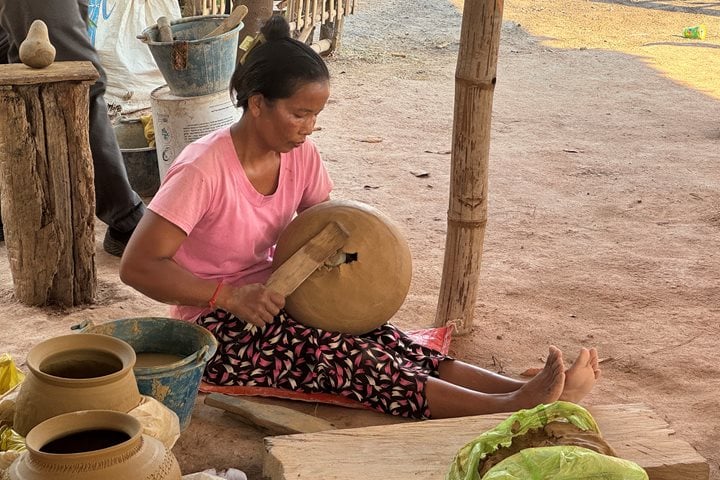Today began with an incomparable and climactic experience that we have all been awaiting: a sunrise visit to Angkor Wat. It is hard to capture the essence of this singular experience with the written word. This architectural wonder served as the Khmer Empire’s great state temple in the early 12th century and also as a mausoleum for its builder, the Sun God-King Suryavarman II. It has been described by observers throughout nine centuries with virtually every superlative available to writers in all languages. The temple’s 19th-century French “discoverer” (of course, it had never truly been lost), the intrepid Henri Mouhot, wrote in his journal in 1862: “This grand temple, a rival to that of Solomon and erected by an ancient Michelangelo, is grander than anything left to us by Greece or Rome.” Its unparalleled enormity is not disputed and its artistic depth and unity, along with its engineering genius, complete the picture of a structure that represents the apogee of classical Khmer architecture and one of the greatest human achievements of all time.
We set out at zero dark 5:15 and carefully walked down the long stone causeway over the 700-foot moat, designed for protection and irrigation purposes but, most importantly, to create an earthly reflection of the ancient Hindu mythological home of the gods, Mt. Meru, which was surrounded by a celestial ocean. We watched in awe as the ruby disk of the sun spread its soft bath of light on the majestic quincunx (a rectangular arrangement of five towers with four at each corner and one in the middle) of Angor Wat’s prasats, or lotus petal-shaped towers, which represent the five peaks of Mt. Meru. Of all the superlatives used to describe Angkor Wat, three seem most apt and encompassing: spectacular (the wow factor is certainly the first reaction), timeless (isn’t this well-nigh proven by the fact that today we stood in the Kampuchean jungle to watch the sun rise over the tomb and funerary temple of Suryavarman II, who left this mortal coil in the year 1150?), and captivating (the fascinating history and culture of this great Hindu temple city, which later became Mahayana Buddhist and then Theravada Buddhist, is endlessly absorbing and intriguing). In the full light of a pleasantly cool morning by Cambodian standards, we followed our sunrise homage with an exploration of this amazing structure including its three-quarters-of-a-mile of finely carved bas-reliefs depicting innumerable scenes from the Hindu epics as well as the pomp and ceremony of the Sun King’s battle processions. We slowly ascended the temple mount, crossing three progressive enclosures and rising higher and higher until we reached the upper level of the temple mount from where we gazed down at the vast jungle below in which this improbable jewel of a temple is ensconced. We had to imagine this expansive jungle once peopled with over 1 million inhabitants in long-gone wooden and thatch houses in the glory days of Angkor. We returned to our hotel for breakfast feeling awed, pleasantly overwhelmed, and marveling that our tremendously high expectations were actually exceeded by this indescribably beautiful and impressive monument to the great Khmer civilization that ruled the Indochinese Peninsula for more than 600 years.
We enjoyed the restof the morning and early afternoon at our leisure, each of us choosing some combination of rest, reflection, more temples, more delicious Khmer food, museums and exhibits, retail therapy at local markets and crafts unions, or just strolling around the exceptionally hospitable town of Siem Reap just a few blocks from our elegant hotel, La Residence d’Angkor.
Our late afternoon activity provided the perfect complement to the morning of taking in Angkor Wat’s grandeur. We visited Banteay Srei (Citadel of Women), a small and exquisitely wrought temple constructed of a rare rose-hued sandstone. Banteay Srei is renowned for the refinement of its intricate carvings on every pediment (the triangular area above an entrance doorway) and lintel (a cross-beam over an entrance doorway or wall) as well as most walls, doors, and arches. Innumerable dramatic episodes from the mythopoeic Hindu epics are finely carved, as if by a jeweler’s hand, at every turn. The carving was so exquisite that the temple was felt to date from the early 14th century, about 200 years after the building of Angkor Wat, when it was first “re-discovered” by the French in the 19th century. Decades later the consecration stele was unearthed and the temple was able to be precisely dated at 967 AD —150 years before the building of Angkor Wat was even begun. We marveled at this artistic tour de force made all the richer by the soft golden glow of the late afternoon sun. The glories of ancient Kambuja continue to amaze.
We capped off an amazing and unforgettable day with a gala farewell dinner at Siem Reap’s trendy Asian fusion restaurant, Aha. The small plates approach allowed for sampling of a variety of tasty and creative dishes, with the highlight for many being the chocolate sticky rice crepe with fresh-made passion fruit ice cream as a final course. “Indochic” at its best.
After dinner some of us chose to stroll through Siem Reap’s friendly night market before retiring for the evening with a sense of awe, accomplishment, and anticipation of tomorrow’s further explorations in this spectacular, timeless, and captivating Kingdom of Angkor.







